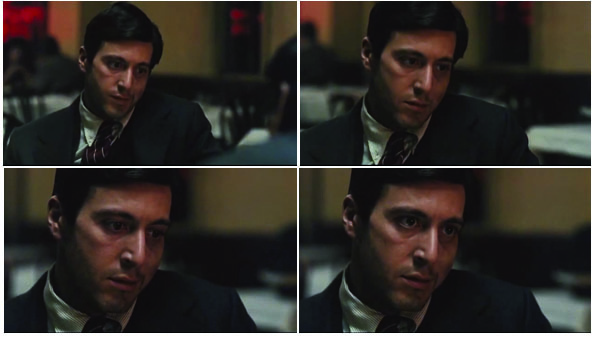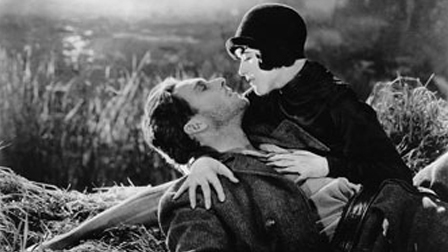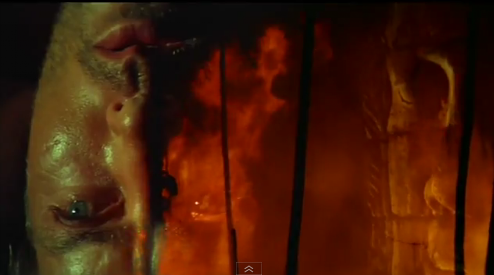
THE GODFATHER (1972, Coppola)
I think you should watch the scene first! (Though if you haven’t seen The Godfather yet, move along, there’s nothing to see here.) In this famous scene, to protect his family, Michael Corleone (Al Pacino), who is a squeaky-clean war hero turned civilian, is to murder his dinner-mates and enemies – Sollozzo and the bastard Captain McCluskey – which will doom him to a life working with “the family.”
The gun to do it with has been planted in the restroom…
.
I’m obsessed with 70’s Coppola right now. And what’s not to be obsessed with; this scene from The Godfather is a piece of perfection (as I consider the whole movie), down to the tiniest detail. Today’s post continues the theme established in The Elephant Man post – ie, a brilliantly calculated close up coupled with amazing sound work.
I’ve been reading Walter Murch a lot lately. Murch did the sound design on this film (and the groundbreaking sound work on Apocalypse Now, to name just a few of his more famous jobs) and this scene is a revelation of what inventive, imaginative design can do.
Coppola & Murch make no beautiful music together
To point – the absence of music (Coppola’s idea) and the screeching subway train (Murch’s idea). It’s amazing to think about the fact that the train was a complete fabrication by Murch in post. There is no train established nearby, no mention of it, and not one bit of visual proof. And, what’s more, it sounds like it’s ON TOP of us when the murder’s going down. But no matter – it’s emotionally exactly right. In fact, I don’t know how many times I watched this scene before I consciously noticed it.
And now the shot, which slowly pushes in on Michael Corleone (Pacino) seconds before he builds his nerve. No suspense music, no cut-aways – just a slow push in on a brilliant actor after all the minutia of character and situation have been meticulously set up in the scenes & moments preceding. And the fact that Italian is being spoken and is not being translated — because at this point, we know, words don’t mean a thing. Brilliant.
This incredible shot, coupled with the lack of music and the exquisite use of sound create an indelible, gripping moment in an equally amazing sequence. Here’s a favorite quote of mine by Murch on the use of music, which he brings up in the book The Conversations, when discussing how they held off the music till after the emotional punch, especially in this sequence, but also throughout the whole film:
.
[This scene] is a classic example for me of the correct use of music, which is as a collector and channeler of previously created emotion, rather than a device that creates emotion…Most movies use music the way athletes use steroids. There’s no question that you can induce a certain emotion with music — just like steroids build up muscle. It gives you an edge, it gives you speed, but it’s unhealthy for the organism in the long run.
.
I love that — after all our emotion is built and spent with no artificial aid from music — the score kicks in with full-blown operatic grandeur once the deed is finally done and Michael’s fate is sealed. At that point, we not only believe it, but we’ve actually experienced it with him. That’s so rare in film.



jeremy Cole
Well said, John. I’m an Apocalypse Now man, myself, but this really is great. It reminds me of that old adage about what you leave out making the rest stronger.
For some strange reason I just watched The Prince of Persia. That film and the whole Bruckheimer canon prove Murch’s point. You can shove empty calories of spectacle down peoples’ throats and get a little sugar high, but what are you left with? (Answer: Armageddon and Pearl Harbor). This scene from the Godfather on the other hand is pared down and lean. You’re exactly right. What’s NOT there in terms of camera work, editing, extras and music, allows for the tension to build and really lets the performance shine through. That’s the meat on the bone.
For the opposite/wrong use of music, check out National Treasure. This is a 180 from Murch and follows the Bruckheimer maxim, “If you can’t dazzle them with brilliance, baffle them with bullsh*t.”
Also, points to Coppola for making the gun hard to find and using that cut away of the men having dinner. Great turning of the screw.
jsbfilm
That is so amazing you just said that, I was just using this Godfather scene in an editing class I’m teaching, and we made the exact same comparison of Michael Bay’s use of sound versus this. I guess Murch’s quote just brings that out in us. Thanks for the thoughtful comment, Jerm.
torsloke
I hope this means you’re going to do “The Conversation” next. I still have trouble wrapping my head around the fact that Coppola directed “The Conversation” just as a way to pass time between “Godfather” and “Godfather 2”. For other directors it would have been the pinnacle of their careers.
There’s a good companion piece to your post from the always-excellent feature from the AVClub, Scenic Routes:
http://www.avclub.com/articles/the-godfather,50431/
jsbfilm
I know, that’s debilitating to think he did that movie as something to do between those two movies – and even more so when you realize he only did GF to finance the movies he really wanted to do. The Conversation isn’t one of my favorites, however. I appreciate it, but I find it too slow and meandering, perhaps because it’s his least emotional film of the era (and it’s the emotions of GFs and Apoc that get me so deeply – perhaps because the stakes are higher in those films – certainly more epic). I’m sure there are some good shots to be pulled, though.
Eric Andrew Dodson
I thought i read somewhere that his work on The Conversation actually created the Sound Designer credit. Can’t remember where.
jsbfilm
Thanks for commenting, Eric. I hadn’t heard that. I see if I can dig anything up…
Anonymous
I like the moment when Michael realizes what he’s got to do. I read it that if he hears the right answer – gets the guarantee – that he may not have to do what he came to do. He head is to his right when he asks. But it moves upright during the answer, then to his left once he comes to grips with what’s going to happen. Then – right before – you can almost feel him getting sick. The meaningless Italian dialog makes the audience as isolated as he is at that moment – as his current existence comes to an end – his coming of age.
Teresa Jenkins Fowler
I had never noticed the sound in this scene, being so mesmerized with Pacino’s subtle acting. Wow. It’s cool how you can hear the car approach, and then it is seemingly crashing in just as he is about to make his move. I love your comment analogy of music to steroids. I could read these blogs for hours. What a find.
jsbfilm
Thanks so much, Teresa. Right, it’s amazing how unnoticeable that sound is – the moment is so intense that we filter everything out – though still being effected by it, I think. Welcome aboard! So glad to have you joining in.
Pingback: Top 10 movies inspired by novels « Radu presents: The Movie-Photo Blog